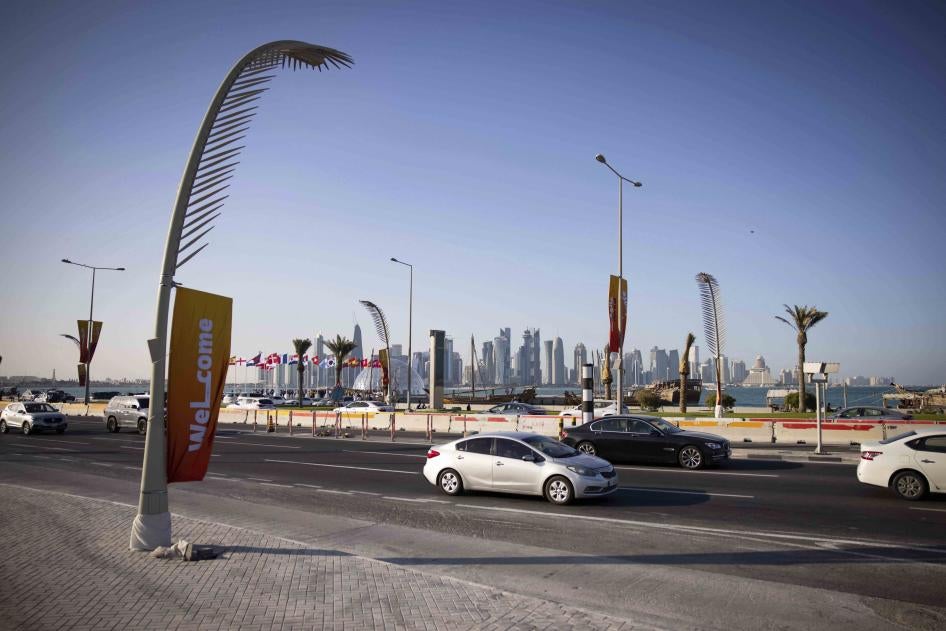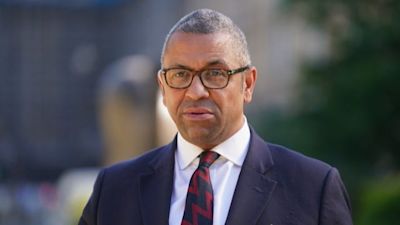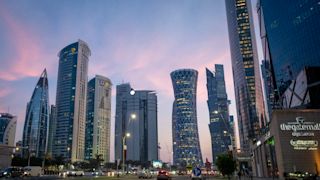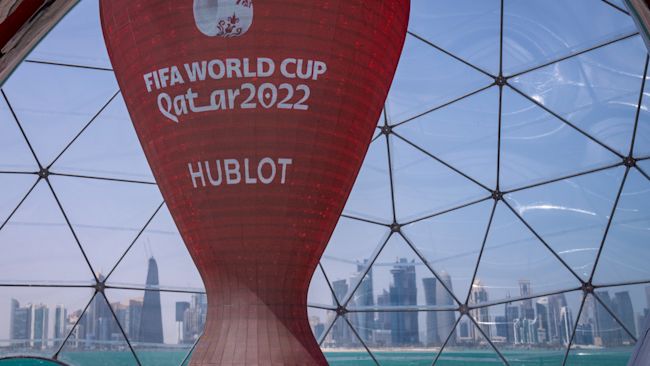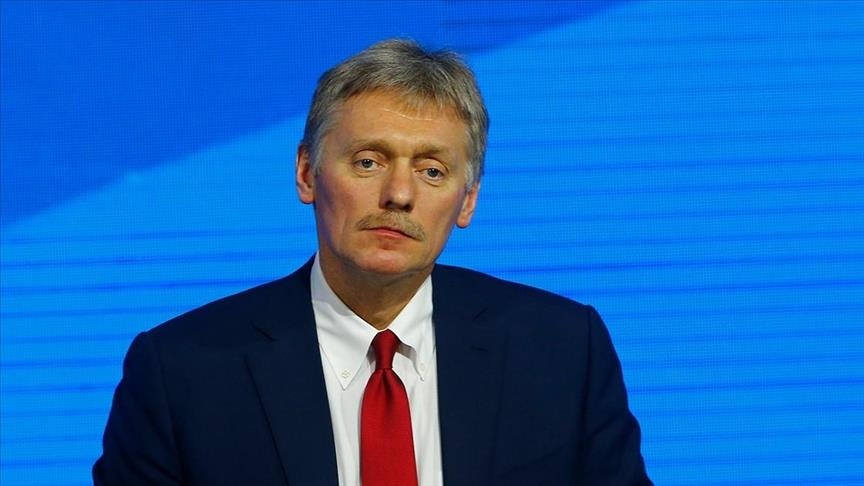TEHRAN BLOG:
There’s no revolution on the horizon, but something has broken
IntelliNews - TODAY
By bne Iran correspondent

Yesterday (October 26) brought the 40 day since the death of Mahsa Amini, thus, for Iran, the traditional end of the mourning period. The story by now is well known around the world. She collapsed and died in the custody of Tehran’s “morality police” who detained the 22-year-old for a loose wearing of the hijab, or headscarf, that, they claimed, breached the country’s Islamic dress code. Amini’s death has so far unleashed more than six weeks of turmoil across the country. Anti-regime protests have fundamentally shifted the bounds of what is and what’s not possible in the Islamic Republic.
On the 40 day of mourning, thousands were seen marching to the graveyard where Amini, an Iranian-Kurdish woman, was buried in Kurdistan province. They marched despite warnings by local officials that people should stay away. Security forces reportedly opened fire. Yet the crowds did not flee. The memorial proceeded.
Such defiance is now almost commonplace. A new dynamic has been born in Iran. More than 200 young people, at least, are thought to have lost their lives in the security crackdown. But when it come to the Islamic powers that be, the spell appears to have been broken.
Hopes inside Iran—and among the millions of the Iranian diaspora in places like Canada, Germany and Australia—have been high that the clerical regime of 42 years might finally be toppled. But recent reports indicate that the numbers now venturing on to the streets to protest are in the low thousands, rather than the millions seen in 2019, when a sudden price hike in the price of Iran’s extremely affordable gasoline triggered anger amid growing economic hardship.
Nevertheless, the protest movement, despite lacking the numbers to bring down the Ebrahim Raisi government and the nearly-all-powerful overarching theocratic power structure led by Supreme Leader Ayatollah Ali Khamenei, has persisted, much to the authorities’ surprise.
In a sense, the situation has moved the goal posts. The past six weeks in fact appear to have given both women and men in the theocratic country of 85 million a more generous goal to aim at. To quell some anger, the clerics quite early on pulled the morality police from the streets of Tehran. They are gone, at least for now. Women are increasingly spotted breaking the rules. They walk through the city without the obligatory hijab and manteau that have been standard for most middle-class liberal women for around two decades. The question now is whether the change will be allowed to last.
Waves of protests
Since taking control of Iran in 1979, the clerical establishment has faced several waves of protests. When the rule that women must cover up in public was established in 1980 just after the revolution, women opposed it—as many photos from the time show—but the surge of power ridden by the hardline Islamists proved too much to resist. Across the intervening four decades, thousands of women have been rounded up and subjected to detention—and worse—for breaching the rules on attire.
Previous popular protests against the regime have been based on politics or economics, like those in 2019. But the current unrest, which truly got going in mid-September after Amini was buried, is about the personal domain, the freedom of the individual, or at least the freedom of the determined women that have led so many of the Amini protests. And the sheer ferocity of the demonstrations and actions of protest undertaken by these women against the male patriarchy has rocked Iran’s male masters. The country’s previous status quo, the previous so-called “normality”, has to some degree dissolved. It would be a foolhardy regime that attempted to stubbornly piece it all back together again in indecent haste.
The unique impact of these protests is seen in how women and girls as young as 12 have come out to demonstrate against the establishment run by Khamenei. The unrest has crossed ethnic and social barriers that were left untouched by previous protests. The talk is of Generation Z—the bulk of those protesting have been aged 16-24. Sadly, the dead are thought to include at least 23 children.
Outrage is felt across many different social strata. Protesters reflect on how the latest to die could have been their daughter, sister or girlfriend, or son, brother or boyfriend. They think back to Amini, they consider how it is that a woman can be harangued or worse by the state simply for showing her hair. The slogan “Women, life, freedom” has become a mantra; it recalls how the French refer to their “Liberté, égalité, fraternité”.
Digitally entwined economy
The maturity of social media in Iran plainly played a big factor in sparking the protests. But shutting down the online world in Iran is not such a simple solution for officials anymore, for the economy has become digitally entwined, interlinked, with the online world. Internet throttling and shutdowns are costing the purveyors of e-commerce—and in Iran, there are a huge amount—losses that in many cases threaten to prove fatal. In the backlash, e-retailers have joined social media celebrities in decrying the top officials for the blunt instrument they have used in disconnecting Iran from the internet.
The impact on Iran’s digital economy has been so immense that the country’s chamber of commerce has said the damage to the economy could be running at $30mn a day. The great number of retailers who rely on the no longer available Instagram continue to lose fortunes in revenues (the bulk of these retailers are women who use the platform to sell wares and services including clothing and opportunities to eat in or out).
Iran’s government has become increasingly disconnected from the youth in recent years. There’s an inflexibility when it comes to perhaps budging an inch in terms of media freedom. A vacuum in the media space emerged decades ago, and it has been filled by expatriate television channels broadcast from London and Los Angeles (this is doubly painful for the regime when they see the Saudi funding).
The level of professionalism in the broadcasting and other forms of communication, such as that seen with international social media platforms, brought about a yearning among Iran’s young. Daily witnessing such freedoms is no easy thing. The youth nowadays clearly shun Iran’s official state media, the only domestic show in town. There’s little hope that its viewer numbers can ever recover.
For those born after the revolution, the unyielding stiffness of the authorities continues to drive migration to countries including Canada and the UK. Perhaps the migration has even proved something of a saviour for the regime—without it, the numbers available to take to the streets would be that much higher.
Accurate data on how many have left the country are not obtainable, but estimates in circulation talk about several millions, perhaps 10 million. Yet tone-deaf government has continued. Just perhaps, from now on, it will no longer be accepted.
Rules of the game have finally changed
On social media, celebrities and footballers, to some surprise, are now among those speaking truth to power. Something really does seem to have fundamentally shifted. Even a dyed-in-the wool establishment creature like Ali Larijani has spoken out against inflexibility. The rules of the game have finally changed in Iran.
There’s a multi-generational call for change that has been a long time coming. The movement is leaderless still, but certain names pop up with regularith, such as that of Hamed Esmaeilion, a widower who was a dentist in Canada until the Islamic Revolutionary Guard Corp (IRGC) in January 2020 shot down Ukraine International Airlines flight PS752 over Tehran, killing 172 people including Esmaeilion’s daughter and wife (the Iranian authorities say the shooting down was an accident. Maybe it was, but there could well have been a cover-up of negligence in the chain of events that led to the tragedy).
The soft-spoken Esmaeilion has embodied the national pain of Iranians. Photos of the man show the sheer level of agony and frustration felt by many towards the clerics in Tehran. Other names include that of Mahsi Alinejad, a former journalist in the US whose push for regime change originated in her “My stealthy freedom” campaign some years back. It nudged women to forgo the hijab.
The road ahead
The regime shows no sign of allowing the seat of power on to the agenda. Encouragingly, however, it does seem that top officials are by now deeply divided on how to respond to the protests that won’t go away. A paralysis has crept into some proceedings. The parliament, for instance, bungled a presentation of the autopsy report on Amini. An MP proved unable to pronounce half of what was given to him to relay to the chamber.
Different factions argue they know the right path to take from here in dealing with the nightmare of deeply scorned women on every street corner, but they are not effective in how they communicate their new diktats. They are even incapable of implementing processes that would ease social rules to at least curb the angst and tensions in society.
The confusion of the factions in the face of the insoluble protests could be the final undoing of the Raisi conservative administration, seen as a rehash of the former hardline Ahmadinejad government that concluded in 2013. The president himself has looked unnerved in recent television footage of him. His spokesman, meanwhile, was something like a rabbit in the headlights when he attempted to calm students at Tehran University on October 24. Photos and video recordings of the spokesman’s meeting with the students leaked to social media suggested that the youth, especially young women, are not for backing down anytime soon.
Irrespective of whether or not the government lets women wear what they want, 43 years into the longest revolution known to man, the protests and outrage persist, convictions and passions continue to spill onto the streets. The obstinate authorities can choose to slay more 16-year-old girls with beatings and bullets. They can kick students out of the university canteen for mingling with the other sex. But the kids are not listening. The fusty edicts of the clerics are not for them.
Ultimately, the authorities are going to have to move over. They’re going to have to make some room for personal expression or they can expect continued turbulence in the cities and towns for months ahead into the cold season. And that, historically, is when more people descend onto the streets of the capital, just as they did in putting an end to the Last Shah and his ancien régime.
By bne Iran correspondent

Yesterday (October 26) brought the 40 day since the death of Mahsa Amini, thus, for Iran, the traditional end of the mourning period. The story by now is well known around the world. She collapsed and died in the custody of Tehran’s “morality police” who detained the 22-year-old for a loose wearing of the hijab, or headscarf, that, they claimed, breached the country’s Islamic dress code. Amini’s death has so far unleashed more than six weeks of turmoil across the country. Anti-regime protests have fundamentally shifted the bounds of what is and what’s not possible in the Islamic Republic.
On the 40 day of mourning, thousands were seen marching to the graveyard where Amini, an Iranian-Kurdish woman, was buried in Kurdistan province. They marched despite warnings by local officials that people should stay away. Security forces reportedly opened fire. Yet the crowds did not flee. The memorial proceeded.
Such defiance is now almost commonplace. A new dynamic has been born in Iran. More than 200 young people, at least, are thought to have lost their lives in the security crackdown. But when it come to the Islamic powers that be, the spell appears to have been broken.
Hopes inside Iran—and among the millions of the Iranian diaspora in places like Canada, Germany and Australia—have been high that the clerical regime of 42 years might finally be toppled. But recent reports indicate that the numbers now venturing on to the streets to protest are in the low thousands, rather than the millions seen in 2019, when a sudden price hike in the price of Iran’s extremely affordable gasoline triggered anger amid growing economic hardship.
Nevertheless, the protest movement, despite lacking the numbers to bring down the Ebrahim Raisi government and the nearly-all-powerful overarching theocratic power structure led by Supreme Leader Ayatollah Ali Khamenei, has persisted, much to the authorities’ surprise.
In a sense, the situation has moved the goal posts. The past six weeks in fact appear to have given both women and men in the theocratic country of 85 million a more generous goal to aim at. To quell some anger, the clerics quite early on pulled the morality police from the streets of Tehran. They are gone, at least for now. Women are increasingly spotted breaking the rules. They walk through the city without the obligatory hijab and manteau that have been standard for most middle-class liberal women for around two decades. The question now is whether the change will be allowed to last.
Waves of protests
Since taking control of Iran in 1979, the clerical establishment has faced several waves of protests. When the rule that women must cover up in public was established in 1980 just after the revolution, women opposed it—as many photos from the time show—but the surge of power ridden by the hardline Islamists proved too much to resist. Across the intervening four decades, thousands of women have been rounded up and subjected to detention—and worse—for breaching the rules on attire.
Previous popular protests against the regime have been based on politics or economics, like those in 2019. But the current unrest, which truly got going in mid-September after Amini was buried, is about the personal domain, the freedom of the individual, or at least the freedom of the determined women that have led so many of the Amini protests. And the sheer ferocity of the demonstrations and actions of protest undertaken by these women against the male patriarchy has rocked Iran’s male masters. The country’s previous status quo, the previous so-called “normality”, has to some degree dissolved. It would be a foolhardy regime that attempted to stubbornly piece it all back together again in indecent haste.
The unique impact of these protests is seen in how women and girls as young as 12 have come out to demonstrate against the establishment run by Khamenei. The unrest has crossed ethnic and social barriers that were left untouched by previous protests. The talk is of Generation Z—the bulk of those protesting have been aged 16-24. Sadly, the dead are thought to include at least 23 children.
Outrage is felt across many different social strata. Protesters reflect on how the latest to die could have been their daughter, sister or girlfriend, or son, brother or boyfriend. They think back to Amini, they consider how it is that a woman can be harangued or worse by the state simply for showing her hair. The slogan “Women, life, freedom” has become a mantra; it recalls how the French refer to their “Liberté, égalité, fraternité”.
Digitally entwined economy
The maturity of social media in Iran plainly played a big factor in sparking the protests. But shutting down the online world in Iran is not such a simple solution for officials anymore, for the economy has become digitally entwined, interlinked, with the online world. Internet throttling and shutdowns are costing the purveyors of e-commerce—and in Iran, there are a huge amount—losses that in many cases threaten to prove fatal. In the backlash, e-retailers have joined social media celebrities in decrying the top officials for the blunt instrument they have used in disconnecting Iran from the internet.
The impact on Iran’s digital economy has been so immense that the country’s chamber of commerce has said the damage to the economy could be running at $30mn a day. The great number of retailers who rely on the no longer available Instagram continue to lose fortunes in revenues (the bulk of these retailers are women who use the platform to sell wares and services including clothing and opportunities to eat in or out).
Iran’s government has become increasingly disconnected from the youth in recent years. There’s an inflexibility when it comes to perhaps budging an inch in terms of media freedom. A vacuum in the media space emerged decades ago, and it has been filled by expatriate television channels broadcast from London and Los Angeles (this is doubly painful for the regime when they see the Saudi funding).
The level of professionalism in the broadcasting and other forms of communication, such as that seen with international social media platforms, brought about a yearning among Iran’s young. Daily witnessing such freedoms is no easy thing. The youth nowadays clearly shun Iran’s official state media, the only domestic show in town. There’s little hope that its viewer numbers can ever recover.
For those born after the revolution, the unyielding stiffness of the authorities continues to drive migration to countries including Canada and the UK. Perhaps the migration has even proved something of a saviour for the regime—without it, the numbers available to take to the streets would be that much higher.
Accurate data on how many have left the country are not obtainable, but estimates in circulation talk about several millions, perhaps 10 million. Yet tone-deaf government has continued. Just perhaps, from now on, it will no longer be accepted.
Rules of the game have finally changed
On social media, celebrities and footballers, to some surprise, are now among those speaking truth to power. Something really does seem to have fundamentally shifted. Even a dyed-in-the wool establishment creature like Ali Larijani has spoken out against inflexibility. The rules of the game have finally changed in Iran.
There’s a multi-generational call for change that has been a long time coming. The movement is leaderless still, but certain names pop up with regularith, such as that of Hamed Esmaeilion, a widower who was a dentist in Canada until the Islamic Revolutionary Guard Corp (IRGC) in January 2020 shot down Ukraine International Airlines flight PS752 over Tehran, killing 172 people including Esmaeilion’s daughter and wife (the Iranian authorities say the shooting down was an accident. Maybe it was, but there could well have been a cover-up of negligence in the chain of events that led to the tragedy).
The soft-spoken Esmaeilion has embodied the national pain of Iranians. Photos of the man show the sheer level of agony and frustration felt by many towards the clerics in Tehran. Other names include that of Mahsi Alinejad, a former journalist in the US whose push for regime change originated in her “My stealthy freedom” campaign some years back. It nudged women to forgo the hijab.
The road ahead
The regime shows no sign of allowing the seat of power on to the agenda. Encouragingly, however, it does seem that top officials are by now deeply divided on how to respond to the protests that won’t go away. A paralysis has crept into some proceedings. The parliament, for instance, bungled a presentation of the autopsy report on Amini. An MP proved unable to pronounce half of what was given to him to relay to the chamber.
Different factions argue they know the right path to take from here in dealing with the nightmare of deeply scorned women on every street corner, but they are not effective in how they communicate their new diktats. They are even incapable of implementing processes that would ease social rules to at least curb the angst and tensions in society.
The confusion of the factions in the face of the insoluble protests could be the final undoing of the Raisi conservative administration, seen as a rehash of the former hardline Ahmadinejad government that concluded in 2013. The president himself has looked unnerved in recent television footage of him. His spokesman, meanwhile, was something like a rabbit in the headlights when he attempted to calm students at Tehran University on October 24. Photos and video recordings of the spokesman’s meeting with the students leaked to social media suggested that the youth, especially young women, are not for backing down anytime soon.
Irrespective of whether or not the government lets women wear what they want, 43 years into the longest revolution known to man, the protests and outrage persist, convictions and passions continue to spill onto the streets. The obstinate authorities can choose to slay more 16-year-old girls with beatings and bullets. They can kick students out of the university canteen for mingling with the other sex. But the kids are not listening. The fusty edicts of the clerics are not for them.
Ultimately, the authorities are going to have to move over. They’re going to have to make some room for personal expression or they can expect continued turbulence in the cities and towns for months ahead into the cold season. And that, historically, is when more people descend onto the streets of the capital, just as they did in putting an end to the Last Shah and his ancien régime.
Clashes erupt in Mahsa Amini's hometown, Washington imposes new sanctions on Iran | WION



